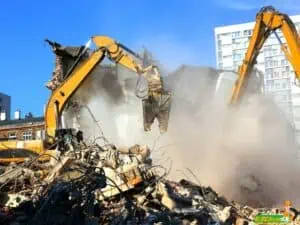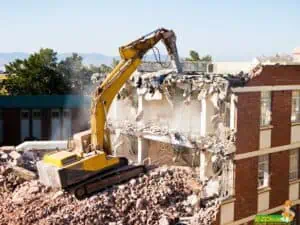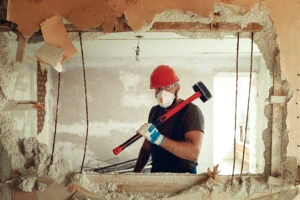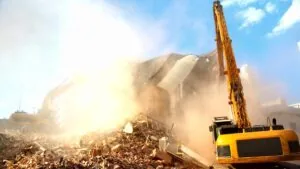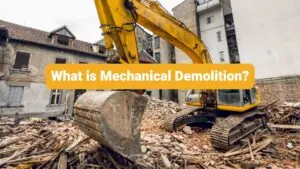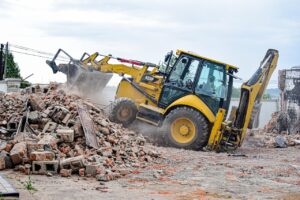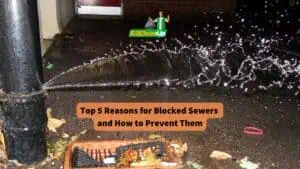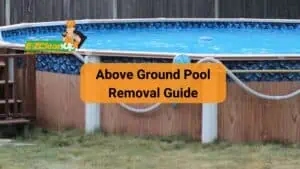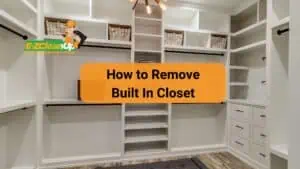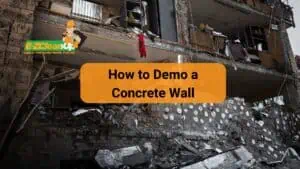To effectively break a thick concrete slab, start by assessing its thickness and any embedded utilities. Use appropriate tools, like jackhammers, for slabs over 3 inches thick. Implement safety measures, including PPE, and begin demolition from a manageable section, gradually working inward.
Learn the steps on how to break thick concrete slab in our guide below.
Step 1: Planning Your Approach
Breaking up and removing concrete is a challenging but necessary task for many renovation and landscaping projects. Understanding the right techniques and tools can make the process safer and more efficient.
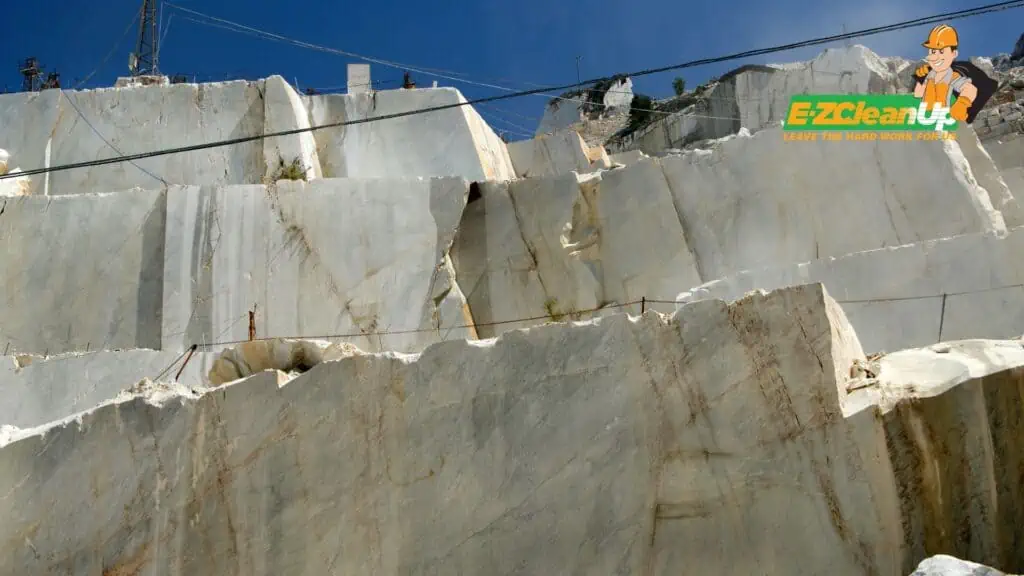
Here’s how you can get started:
Assessing the Size and Thickness of the Concrete Slab
The thickness of your concrete slab is a critical factor to consider before beginning demolition. For residential projects, slabs typically range from 4 to 6 inches in thickness, but this can vary based on the specific requirements of your project and the load the concrete is expected to bear.
If you’re dealing with new construction, you can find this information in the construction documents. For existing slabs, you might have to use physical methods to measure thickness, such as drilling a small hole and using a wire probe.
In some cases, non-destructive testing (NDT) technologies like impact-echo or ground-penetrating radar may be employed for a more accurate assessment.
Identifying and Marking Any Utility Lines or Pipes
Before any demolition work begins, it’s crucial to identify and mark any utility lines or pipes that might be embedded within or running below the concrete slab. Contacting your local utility companies or using services like 811 can help you locate and mark these utilities to ensure the safety of your project.
Choosing the Right Tools for the Job
Selecting the appropriate tools is dependent on the thickness and size of your concrete slab, as well as the specifics of the project. For thinner slabs or minor demolition work, tools like sledgehammers or jackhammers might suffice.
For thicker slabs or larger projects, heavier equipment, such as pneumatic or electric jackhammers, and even machine-mounted breakers, might be required. It’s also important to consider the use of safety equipment, including gloves, goggles, and dust masks, to protect against flying debris and silica dust.
Step 2: Observing Safety
Ensuring that you and anyone involved are protected against potential hazards is the first step towards a successful and injury-free completion of the task at hand.
Personal Protective Equipment (PPE) Requirements
PPE serves as your first line of defense against the various hazards present in concrete demolition work. It is vital to equip yourself with:
- Gloves and Boots: These protect against skin irritations or chemical burns from cement chemicals and provide defense against abrasions from debris.
- Safety Goggles: Essential for shielding your eyes from chemical splashes and concrete dust.
- Face Protection: Masks or respirators such as P-95 or N-95 are crucial for preventing lung problems caused by inhaling concrete dust, which can contain harmful crystalline silica.
- Full-Length Clothing: To minimize skin exposure to concrete, which can cause burns and irritation.
Securing the Work Area to Prevent Unauthorized Access
Before beginning demolition, it’s critical to observe the following:
- Clear the area of debris, tools, or objects that might cause tripping or obstruction.
- Mark any underground utilities to avoid accidental strikes with the concrete breaker.
- Use caution tape or barriers around the work area to keep unauthorized personnel out.
- Ensure proper lighting, especially if working in low-light conditions or at night.
- High-visibility clothing is recommended to ensure that workers are easily seen by others, further reducing the risk of accidents.
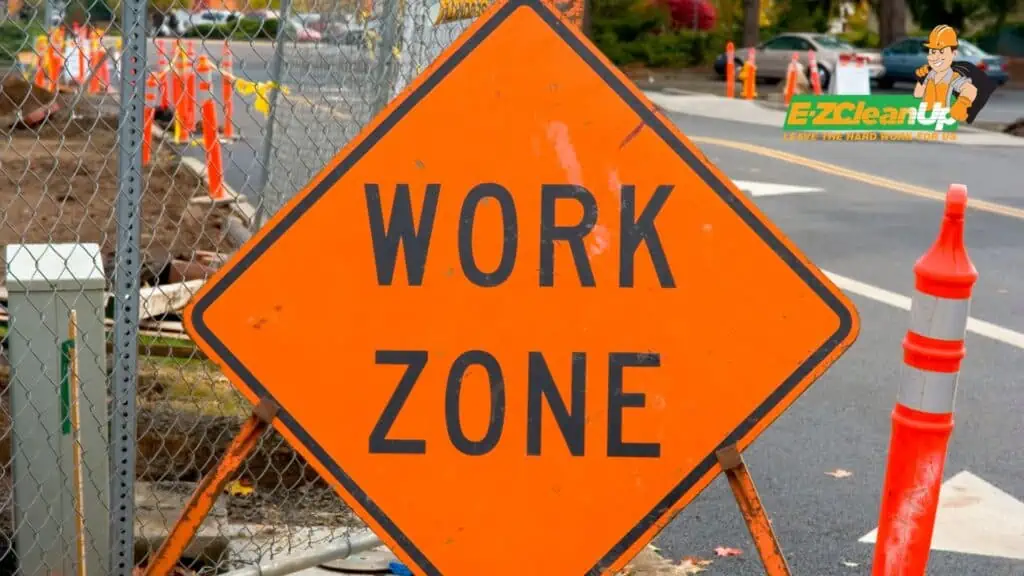
Handling Tools and Debris Safely
Operational safety extends beyond personal protection to include the proper handling of tools and the resultant debris:
- Use tools designed for dusty environments or equipped with water supplies to suppress dust.
- Implement proper lifting and handling techniques to avoid injuries from lifting heavy concrete pieces. Always lift with your legs, not your back, and consider mechanical assistance for heavy loads.
- Have washing stations available for immediate cleaning of the skin or eyes in case of concrete exposure.
- Ensure the continuous inspection of the work area during operations to maintain safety measures and identify new hazards.
Step 3: Breaking the Concrete Slab
While it may look difficult to deal with thick concrete slab, it can be done efficiently as long as you have the right approach and tools
Starting with a Small, Manageable Section
It’s essential to begin the demolition process by focusing on a small, manageable section. This strategy not only makes the task seem less overwhelming but also allows for easier removal and disposal of the broken concrete. You might consider starting six inches from the edge and working your way in to systematically break the slab.
Techniques for Manual Breaking (Sledgehammer, Jackhammer)
For manual breaking, a combination of a sledgehammer and a pry bar is effective for concrete slabs three inches thick or less. Start by striking the concrete with the sledgehammer, and then use the pry bar to lift and remove the broken pieces. This technique helps reduce the physical effort and time involved in the process.
If the concrete slab is more than three inches deep, a jackhammer becomes a necessary tool. It’s designed to handle thicker concrete efficiently. When using a jackhammer, ensure it’s held firmly and upright, letting the tool do the work without forcing it into the concrete. This approach prevents damage to the tool and potential injury.
Using Power Tools and Machinery for Efficient Breaking
Power tools, such as rotary hammers and heavy-duty breakers, are ideal for tackling larger or more stubborn sections of concrete. A rotary hammer, equipped with a chipping function, is particularly useful for breaking up smaller amounts of concrete or for tasks like removing tile from a subfloor.
For extensive demolition projects, a heavy-duty breaker can break the slab into smaller, manageable pieces, which can then be removed with the help of a shovel and a wrecking bar.
When operating power tools and machinery, wearing the recommended personal protective equipment (PPE) is crucial. Also, it’s important to inspect the tools for any damage before use and clean and lubricate them after use to maintain their efficiency and prolong their lifespan.
Step 4: Removing Concrete Debris
When the hard work of breaking up a concrete slab is over, it’s time to move on to the equally important task of removing and disposing of the debris.
Segmenting the Debris for Easier Removal
Breaking the concrete into smaller, manageable pieces is crucial. This makes it easier to remove and helps with sorting and recycling later on. Start by using tools like sledgehammers or jackhammers for the initial break-up, then switch to chisels and pry bars to segment the concrete further into removable pieces.
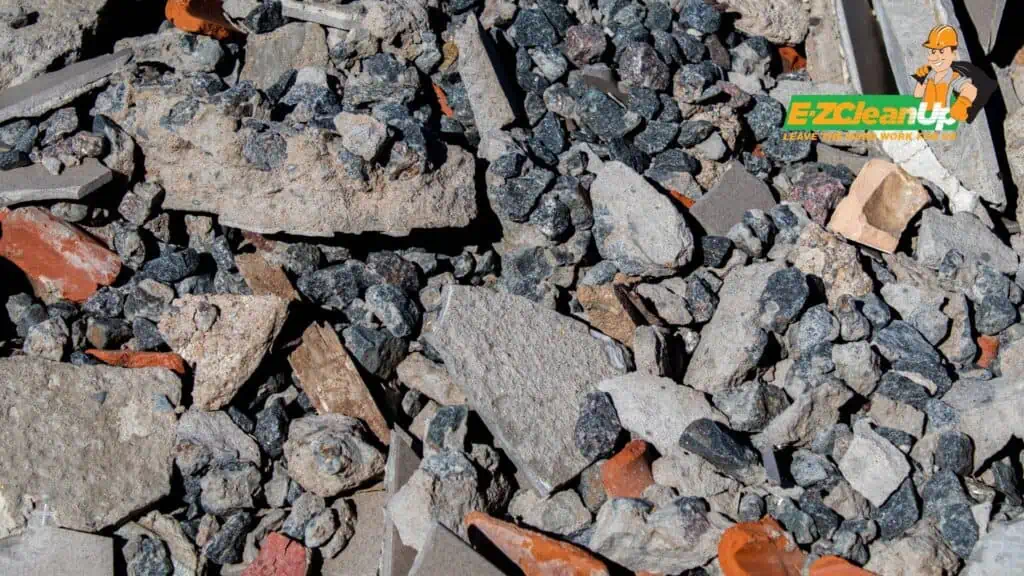
Safe Lifting and Moving Techniques
Once you have your concrete broken into manageable pieces, it’s important to employ safe lifting and moving techniques to avoid injury. Always lift with your legs, and consider using a wheelbarrow or a sturdy container to transport the debris to the disposal area.
Depending on the project’s size, you might need multiple trips or even consider renting a dumpster for larger removal needs. Remember, keeping the work area clear and organized is essential to preventing tripping hazards.
Options for Disposing of Concrete Waste
When it comes to disposal, you have several options. Many areas offer recycling facilities specifically for concrete, where it can be processed and reused for various purposes. This is not only environmentally friendly but can also be cost-effective.
If recycling isn’t an option, renting a dumpster or calling a junk hauling company can provide convenient removal solutions. Before disposal, check with your local waste management facilities to understand the guidelines and fees associated with concrete waste.
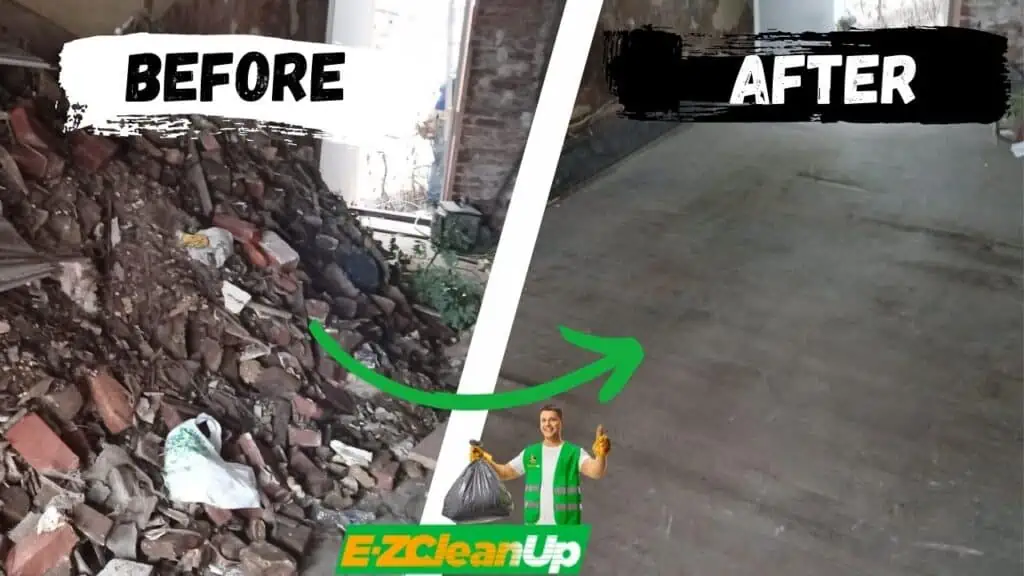
Step 5: Cleaning Up the Site
After the meticulous work of demolition and construction, clearing the site is a crucial step to wrap up the project neatly. It ensures the area is safe, clean, and ready for the next phase, whatever it may be.
Ensuring All Debris Is Collected and the Site Is Clear
The key to a thorough clean-up process is ensuring that all types of debris, including bricks, concrete, wood, metal, and glass, are collected and removed from the site. Heavy materials can pose a hazard, requiring careful handling and removal.
Moreover, hazardous materials like asbestos and lead-based paint need special attention to prevent health risks and environmental harm.
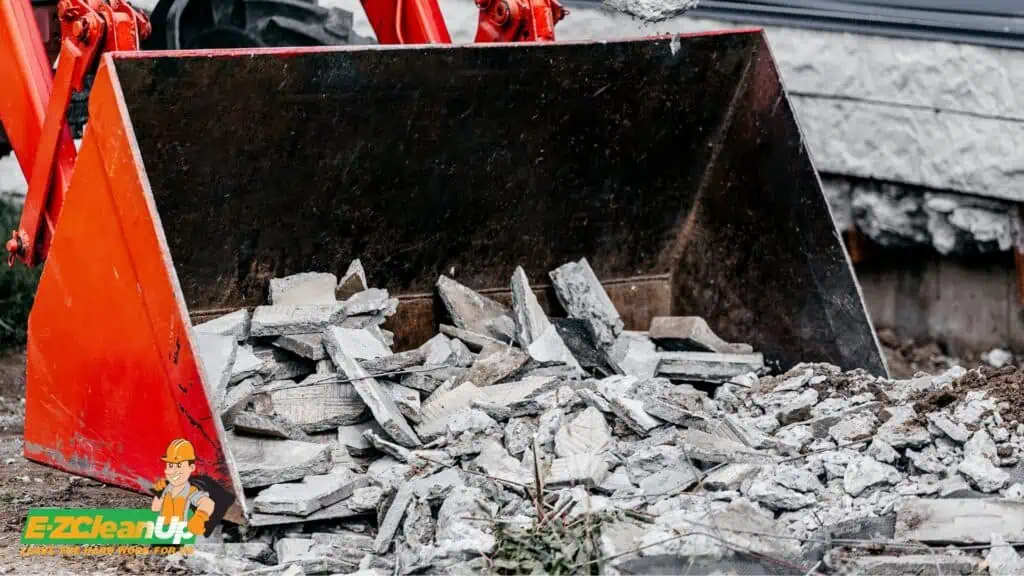
Inspecting the Area for Any Missed Pieces
After the initial cleanout, a detailed inspection of the site is crucial to identify any missed debris or hazardous materials. This step is essential to maintaining safety and efficiency. It prevents accidents, injuries, and potential legal issues.
Final Safety Checks and Clearing Tools and Equipment
Concluding with a safety check ensures that the site is secure and free from potential hazards, including sharp objects and heavy debris that could cause injuries. Additionally, it’s important to collect and clear all tools and equipment used during the demolition and clean-up process.
Companies specializing in construction debris disposal, like us at EZ CleanUp, can significantly aid in this process by removing various types of construction and demolition debris. You can schedule your project over the phone or by filling out an online form. Likewise, you can check our updated pricing page to get an idea of how much this will cost.
Step 6: Eco-friendly Disposal and Recycling of Concrete
When it comes to the eco-friendly disposal and recycling of concrete, you have several options that align with sustainable practices:
Local Recycling Centers That Accept Concrete
Many local recycling centers and construction and demolition recycling facilities accept concrete. These centers often repurpose the concrete by grinding it back into an aggregate mixture, which can then be used in new construction projects such as building roads and bridges.
Initiating the recycling process might require some research to identify the facilities near you that accept concrete. However, this step is well worth taking for the environmental benefits it brings.
Repurposing Concrete Debris for Other Projects
Repurposing your concrete debris can be another sustainable option. Old concrete can be crushed and reused as base material for roads or as aggregate in new concrete. It significantly reduces the need for new materials and minimizes the carbon footprint associated with producing new concrete.
Local landscaping companies, concrete suppliers, or even community projects may accept old concrete for these purposes. It’s worth exploring how your old concrete can serve new projects, potentially even within your own community.
Contacting Professional Waste Disposal Services for Large Quantities
For larger quantities of concrete that might be beyond the scope of manual handling or if you’re looking for a more convenient disposal option, professional waste disposal services can be a viable solution. They provide an environmentally responsible way to handle concrete waste and ensure it is repurposed efficiently.
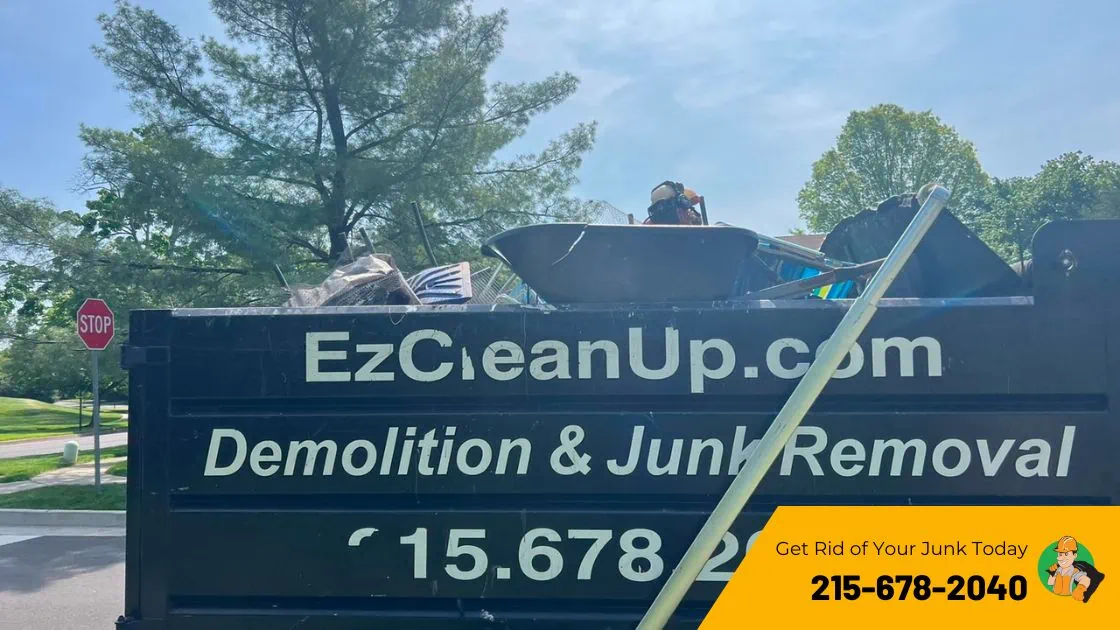
Let Us Take Away Your Construction Debris
After you have followed the steps on how to break thick concrete slabs, the next phase is cleanup. The weight, volume, and transportation of concrete debris are considerable problems, often overlooked during the planning phase.
EZ CleanUp offers a seamless solution to this dilemma. Specializing in the removal of any junk, including construction debris, we provide a streamlined service to clear your site efficiently. Let us take care of the heavy lifting and disposal, which will allow you to focus on what’s next.
Ready to clear the way? Contact EZ CleanUp today.


